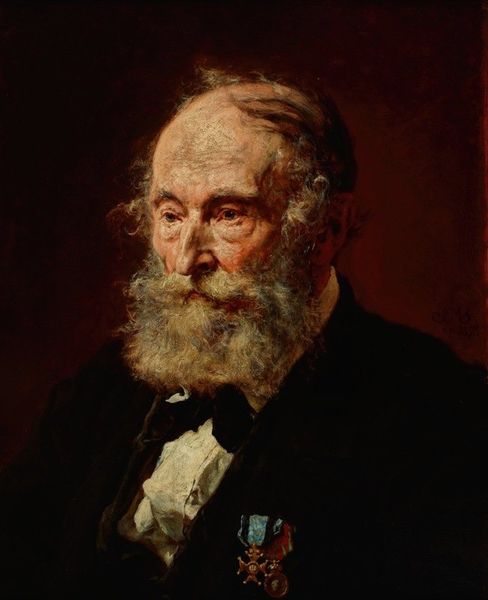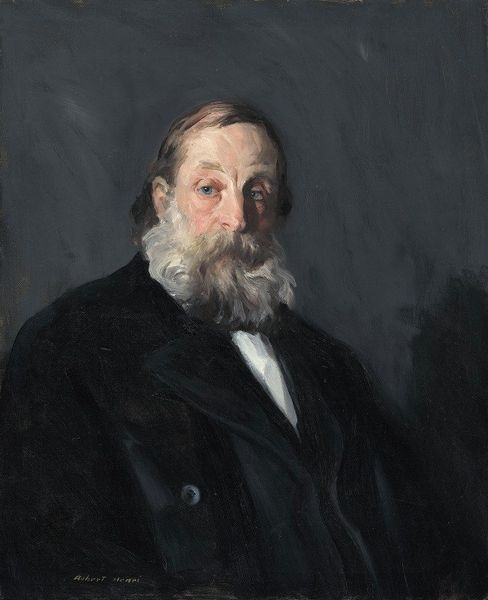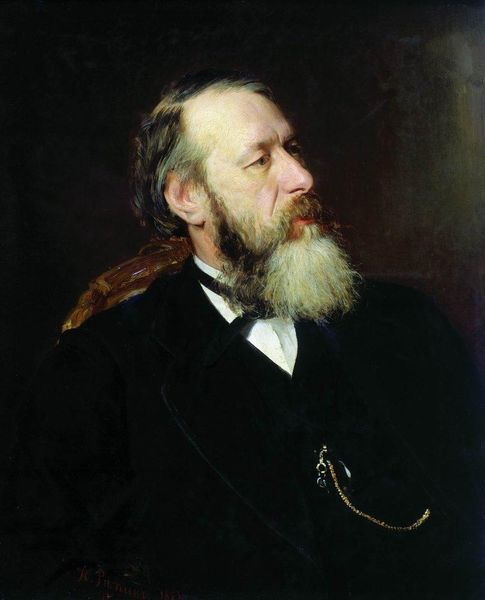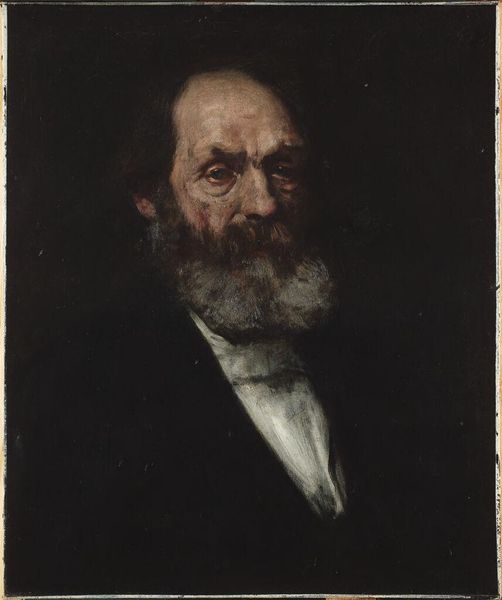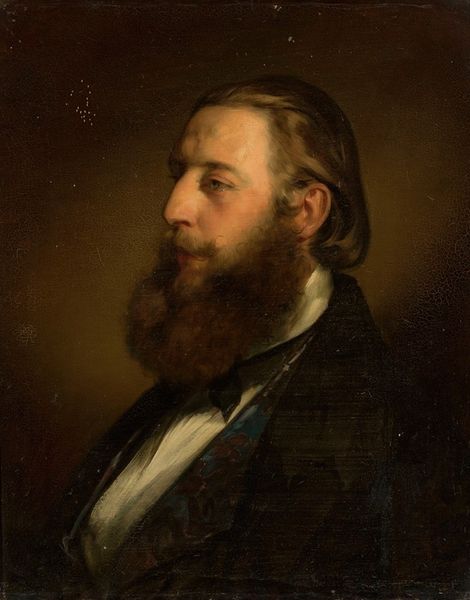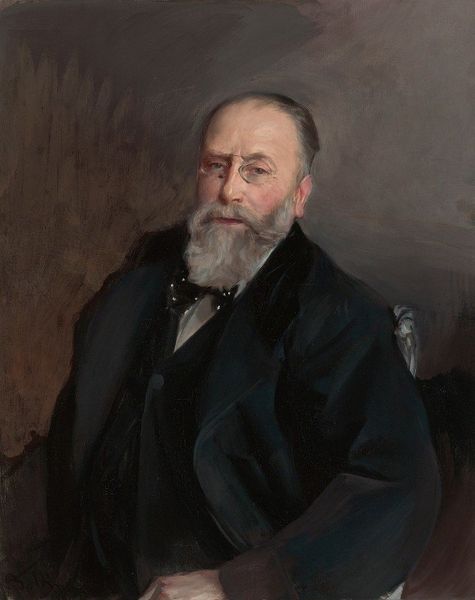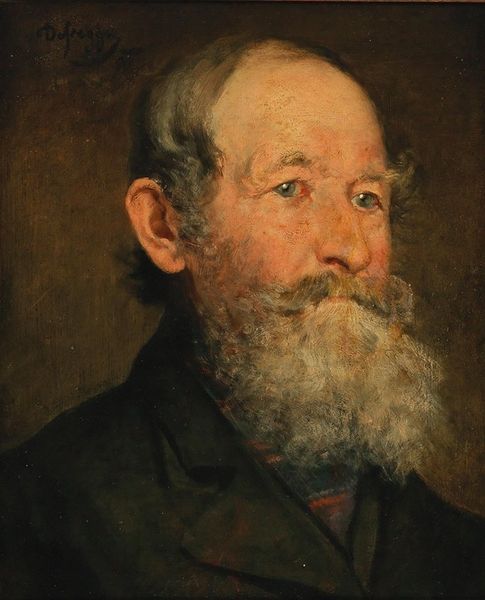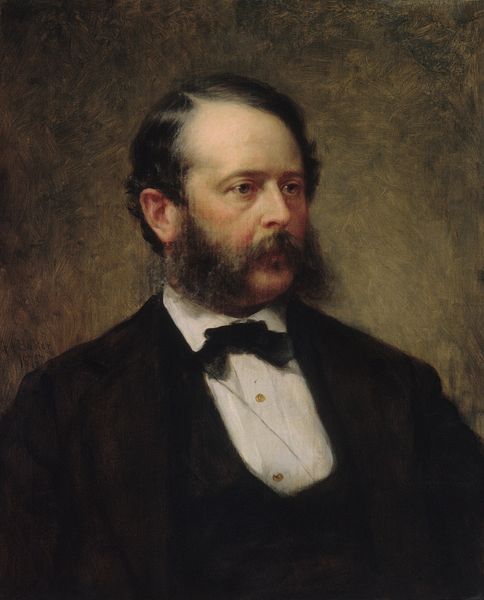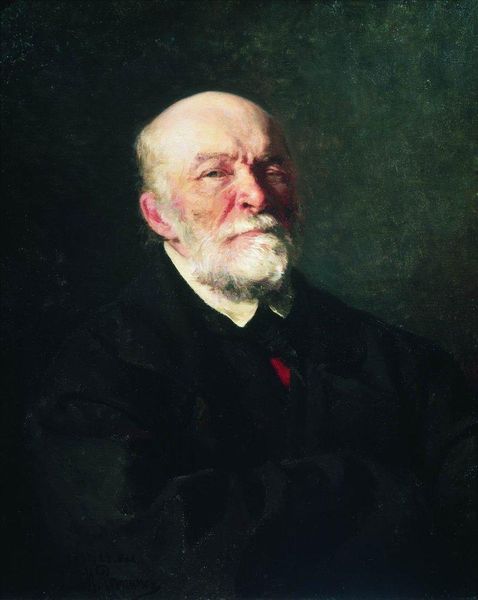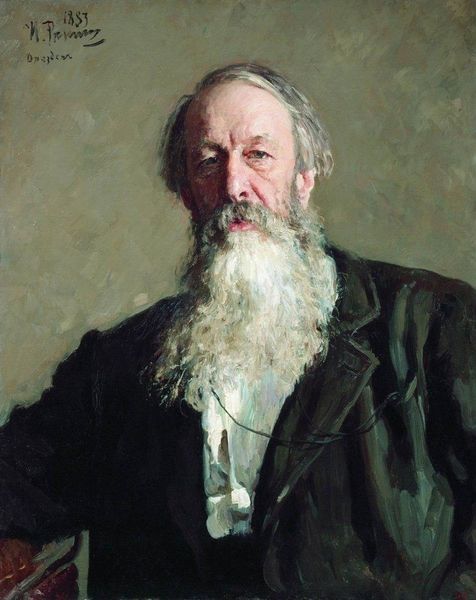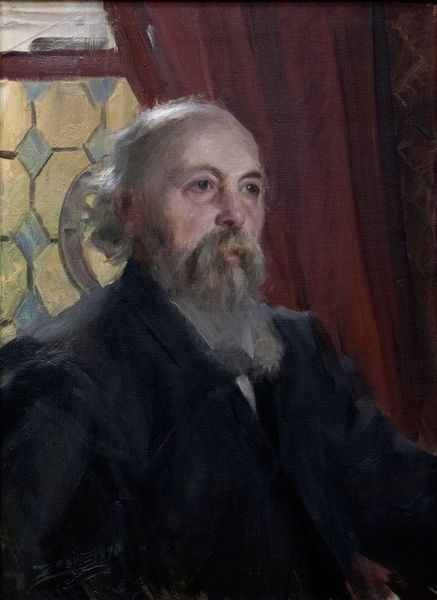
painting, oil-paint
#
portrait
#
figurative
#
portrait
#
painting
#
oil-paint
#
portrait drawing
#
academic-art
#
realism
Copyright: Public Domain: Artvee
Editor: Here we have Gyula Benczúr's "Portrait of the Artist's Father," created in 1873, using oil paint. There’s a certain… gravity to the figure; the weight of the brushstrokes, the darkness of the palette… It almost feels like you could reach out and touch the texture of his beard. What do you see when you look at this portrait? Curator: Focusing on purely visual terms, I note how Benczúr’s technical virtuosity shines through the control of light and shadow, wouldn't you agree? Observe how the artist sculpts the face with chiaroscuro, drawing the viewer’s eye to the subject's gaze. Also, consider the formal composition: the triangular structure created by the figure’s beard and chest, providing a stable base. How does this geometric stability influence your perception of the figure? Editor: That's a good point. The geometry gives the portrait a strong, grounded feel. But it almost seems to flatten the figure. I notice it’s not a super innovative composition, even for its time. Is Benczúr perhaps more interested in technical skill than pushing any artistic boundaries? Curator: Precisely. The brushstrokes are indeed a study in themselves, reflecting a specific art training in the Academy: tight control, visible only upon closer inspection. Do you observe how the artist creates depth, layering pigment in thin glazes, creating that rich, tactile quality you noted? The formal elements function together to represent not just a man, but a specific construction of masculinity and social status in the late 19th century. The details are the language this portrait speaks. Editor: Interesting, I hadn’t really considered the painting that way, just focusing on surface-level realism. I'll have to keep this language in mind from now on. Curator: Indeed. Now you might view other figurative works in the collection in an entirely new light.
Comments
No comments
Be the first to comment and join the conversation on the ultimate creative platform.
